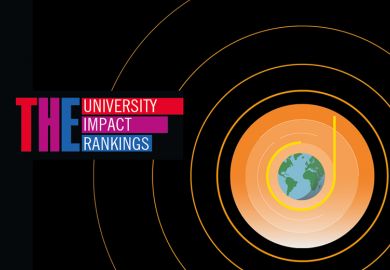It has long been a defining characteristic of world university rankings that they focus heavily on research.
This inevitably draws criticism, but the truth is that it is both necessary and as it should be – necessary because research metrics constitute the bulk of the finite range of globally comparable datasets, and as it should be when the aim is to identify the best-performing research-led universities.
If our flagship world ranking were to appear without the powerhouses of Oxford, Cambridge, Harvard and Stanford near the top, it would be incredible in the literal sense.
Nevertheless, the argument that research metrics are not the be-all and end-all for many great institutions is well founded, as are concerns that if rankings focus on research to the exclusion of all else, they risk incentivising a dangerous homogeneity. I say dangerous because our complex world needs great universities with real diversity of mission – not 20,000 institutions that are all imitating Harvard, with rapidly diminishing success.
Whatever your position on them, rankings have become hugely influential across global higher education, and as an organisation that prides itself on helping universities of all kinds, Times Higher Education has worked hard to innovate and respond to these legitimate concerns.
That is why, in recent years, we have broken new ground with our teaching rankings, which currently benchmark university performance in the US, Europe and Japan.
And it is why today we break the mould with a radically new approach, assessing impact and innovation by mapping more than 500 universities’ policies and practices against 11 of the United Nations’ Sustainable Development Goals.
Take the goal of gender equality: among the areas assessed by our ranking are the admissions gender mix, the number of first-generation female students, the proportion of women in senior positions, the proportion of published research by female faculty and policies on non-discrimination, maternity benefits, childcare facilities and professional mentoring. This is just one of the areas considered, and just a sample of the areas that we have assessed, but you will see straight away that this is a very different snapshot of excellence from that considered by other exercises.
For THE, this ranking is a source of great pride because we have spent nearly 50 years celebrating, supporting and fighting for universities of all kinds, and for those who work and study in them. As such, we know that the areas of performance we are measuring matter hugely to our sector.
Sticking with the theme of gender equality, I recall talking to a professor from India who told me about the extraordinary impact that one institution in his state had had on the local people.
In this particular region, it is not only the educational outlook that is poor for girls, so too is the chance of being born in the first place. The gender mix of the population is tilted heavily towards males because poor families with limited resources often resort to sex-selective abortion to ensure that they have boys. In the area immediately around one women’s university, however, this population bias is cancelled out entirely, and the professor put this down to the impact of that educational institution that so clearly values female lives.
This is, of course, a very specific example of impact, and it would be naive to suggest that any ranking could capture and distil every such achievement in the perfect way.
But it is a vivid illustration of the way in which universities can address the often unique challenges facing their local communities.
For THE, the driving force behind this new ranking has been to recognise and encourage this deep and transformational engagement of universities with the issues that matter most to our societies – accepting that these are addressed through research and teaching, but also that impact manifests itself in many other ways.
It is our particular hope that this will help some of our most innovative universities – those that are brave enough to challenge the status quo and intervene when they see inequality or ways in which they can improve lives – to demonstrate their success, and in doing so secure continued support – financial and otherwise – for the exceptional work they do.
Register to continue
Why register?
- Registration is free and only takes a moment
- Once registered, you can read 3 articles a month
- Sign up for our newsletter
Subscribe
Or subscribe for unlimited access to:
- Unlimited access to news, views, insights & reviews
- Digital editions
- Digital access to THE’s university and college rankings analysis
Already registered or a current subscriber?






